EXPERIENCE IN CULTIVATION OF AQUATIC MOSS
Why Isn't the Moss in Your Aquarium Green and Beautiful? This article is a sharing article from Ken and does not mention old information that you can easily find on Google like "moss needs cool water" for example. Instead, I will share new and detailed experiences for you to easily understand and apply practically.
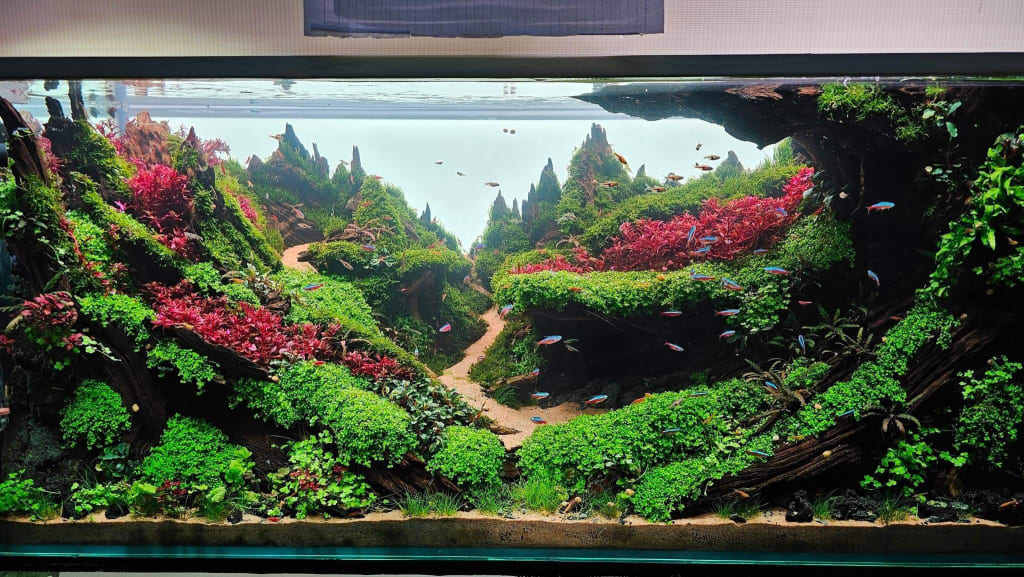
1. What is the most technically correct way to grow moss in an aquarium?
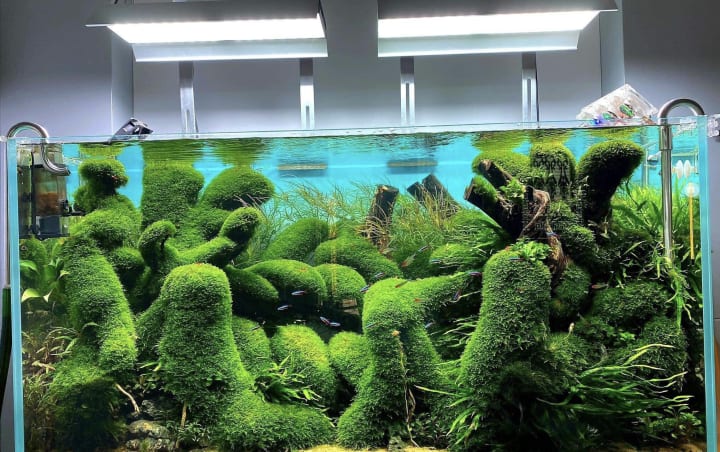
Moss is a very beautiful plant and can be present in all aquarium designs from Asian aquariums, Dutch aquariums to the simplest home aquariums. Moss can be trimmed to shape and used in fish breeding as well as providing foraging, sheltering and growing areas for small ornamental fish and shrimp. Usually tied or glued to driftwood or rocks.
How to grow moss in an aquarium is as follows:
Step 1: In order for moss to grow well, you should tie or stick it on a hard substrate so that the moss does not float to the surface of the water.
Step 2: When attaching moss to the substrate, you should use scissors or a knife to cut it into small pieces about 1-2cm and then spread it evenly on the surface of the substrate.
Step 3: You don't need to tie the thread or string too thick, so space it out so that the moss can receive light and germinate. From the position of the cut lines, the moss will branch out quickly in favorable conditions.Knowing how to grow moss in an aquarium is not enough, you also need to know how to take care of it
For those who are passionate about bonsai aquariums, the correct technique of growing moss in an aquarium is very important. The presence of moss gives charm and realism to the aquarium. Therefore, you need to pay attention to the nutrients in the water to ensure the growth and development of moss.
In the early stages, you should add liquid fertilizers that contain a lot of potassium to help the plant sprout quickly. Note that when using liquid fertilizer, algae will also break out, so be careful to use the correct dosage according to the instructions. If your tank is already in stable conditions or has too many plants, you do not need to use moss stimulant.
Moss is a plant that is not too strict with light. You can use LED or odyssey lights. Note that too much light will cause the moss to burn its leaves. In addition, CO2 is also a very important factor for moss. With enough CO2, moss will grow and develop very quickly.
However, moss is extremely sensitive to temperature. From 23oC -26oC, the moss produces young leaves quite quickly and the moss is green, but when it rises from 28oC to above 30oC, the moss begins to turn gray. You also don't need to worry about moss dying because moss is a single-celled plant that will grow and develop again if conditions are favorable.Suggestions for the simplest and easiest types of aquatic moss to grow for you
There are many different types of aquatic moss for you to create layouts according to your preferences, each type has its own beauty with many different shapes. Here are some of the easiest species to care for for beginners:
Java Moss – Java Moss
This is the easiest moss to grow today. They can grow in almost all different water conditions, withstand temperatures up to 30oC and high or low light intensity. Almost no care is needed for Java Moss, just tie it up, wait and reap the results.
Flame Moss – Flame Moss
With its unique shape and quite special growth model, Flame moss has become very popular in the aquatic world. Instead of growing horizontally into a spreading canopy, Flame moss grows vertically in twisted leaves like a flame. Flame moss is also quite easy to care for, after a short time it can bond with aquatic driftwood.
Taiwan Moss – Taiwan Moss
It can be said that Taiwanese moss is also quite easy to care for. You just need to avoid hot temperatures and keep the water cool at 27oC or below. Taiwanese moss has very good coverage. In the aquatic world, Taiwanese moss is often used to make beautiful moss walls.
Indeed, moss is a very beautiful aquatic plant and has a fairly simple way to grow. We believe that the consideration of choosing this plant in the tank will create conditions that will help your indoor aquarium design become more eye-catching and attractive.
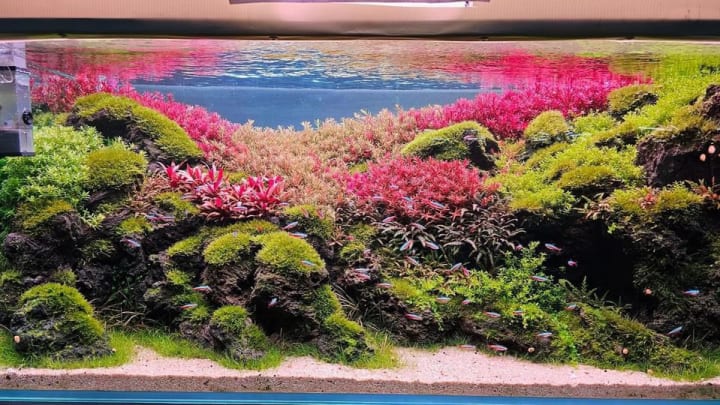
First, I would like to give some experimental information in many lakes
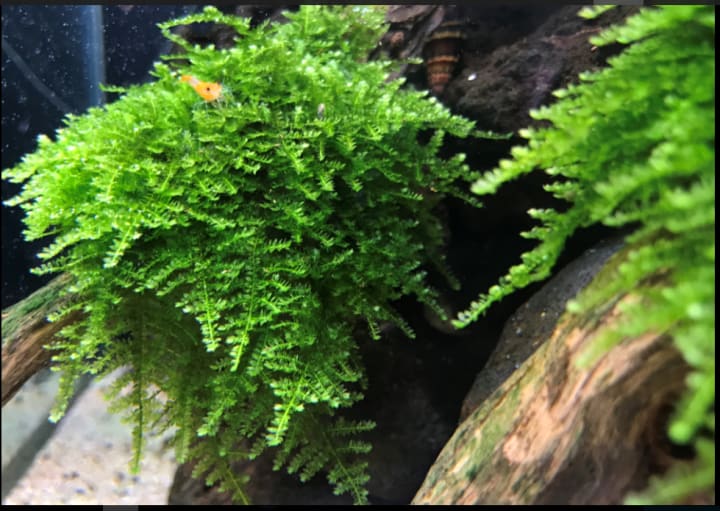
Case 1: many of my tanks use inert fertilizer, ada, gex, contro soil, aquafor even though the light is very high, for example 6 T5 odysea bulbs for a 90x 45 x 45 cm tank, or 8 bulbs for a 1m2 x 50 x 50 tank , moss still grows very green and beautiful.
Case 2: I experimented, set an inert substrate tank of size 1m2 50 50, no nutrients, however I placed a lot of brown lava on the bottom. After running the filter stably for a few weeks, I started adding moss (minitaiwan and wepping sing) and driftwood to the tank. I turned on the light quite high, at 80-100 PAR (about 6 t5 bulbs turned on 8 hours/day), co2 30 ppm and water at 27-28 degrees Celsius, just 1 week later the moss started to turn yellow, dry and gradually die, even though I added nutrients or changed the water regularly, it still happened. My input water source is tap water with GH of 2, Ca of 17 ppm and Mg of 3 ppm, pH of 6.0-6.5.
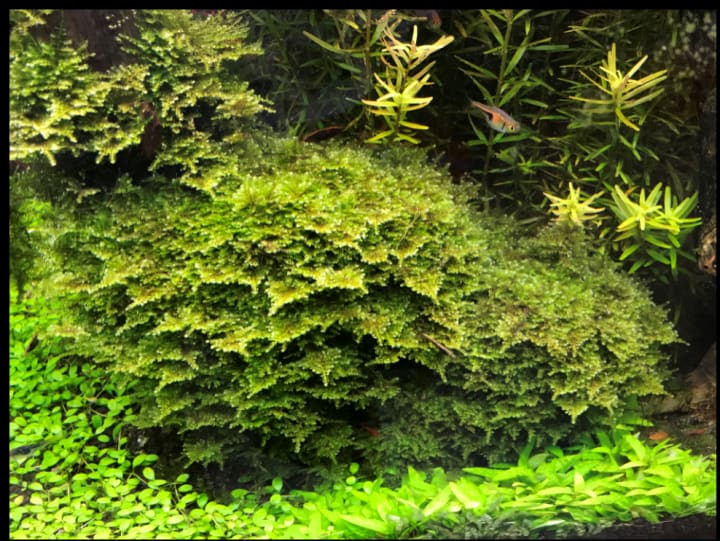
The pond was as above, this time I replaced all the beautiful green moss, and I reduced the light to very low, to about 2 T5 bulbs (30 PAR), after 1 week the moss continued to have the same phenomenon. From this, it can be deduced that moss death in this case is not due to too much light.
I thought about eliminating many possibilities, and decided to turn off the lights for a week. The light of this lake mainly comes from the lamp on the wall of the room. But the results were very surprising, the moss started to turn green and was very beautiful and grew quickly.
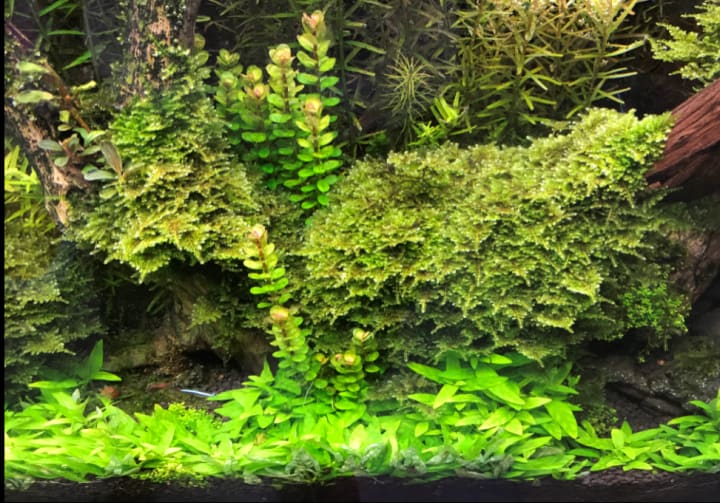
So what is the reason? According to experience, I suspect that my moss got Fe poisoning from a pile of brown lava I lined at the bottom of the lake, because when there is light, the Fe is photo-deoxidized from Fe3+ to Fe2+ for the moss to absorb and cause toxicity. I quickly brought the water to test and it was true that the amount of Fe exceeded the threshold.
For those of you who are not familiar with the relationship between Fe and light, the formula for photoreduction of iron is as follows:
Photoreduction of Iron: Fe3+ (Fe found in organic matter) + Light => Fe2+ (can be absorbed by aquatic plants and algae)
This means that if Fe is present in water, and without light, plants and mosses cannot absorb it (or absorb too much and cause toxicity). The more Fe the light has, the stronger it is, and this is also the reason the lake is too bright or damaged by moss such as hair moss
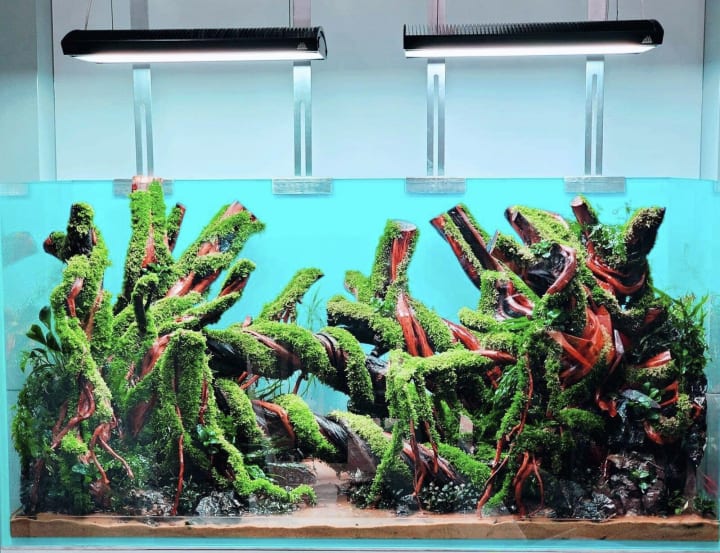
About the Creator
Ken aquariums
Telling stories my heart needs to tell <3 life is a journey, not a competition
If you like what you read, feel free to leave a tip,I would love some feedback
https://www.pinterest.com/Ken_Aquariums
https://s.shopee.vn/1B0pL9ZA9m
Enjoyed the story? Support the Creator.
Subscribe for free to receive all their stories in your feed. You could also pledge your support or give them a one-off tip, letting them know you appreciate their work.






Comments (1)
Very inspiring read, thanks for sharing. Please develop it further so I can have more of this interesting knowledge